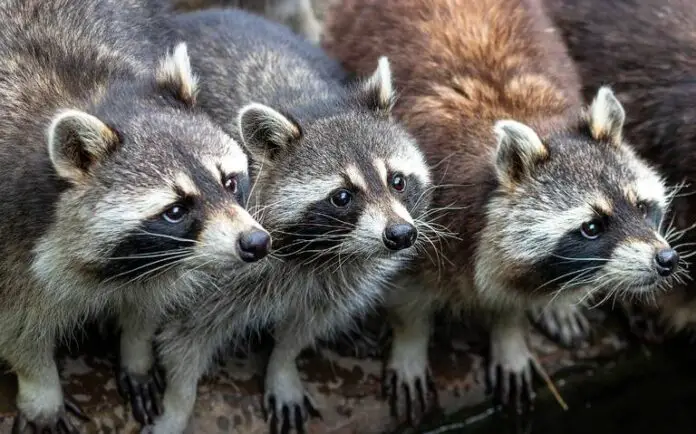The presence of raccoons on the beach of Playa Miramar, in Tamaulipas, has caused surprise and curiosity among locals and tourists, who have shared photos and videos of these animals on social media.
But how did these mammals get to the coast? According to experts, raccoons are native to North America and have a wide distribution in Mexico, especially in the states of Nuevo León, Tamaulipas, Veracruz, Tabasco, Campeche, Yucatán and Quintana Roo.
Raccoons are omnivorous and adaptable, meaning they can feed on a variety of foods and live-in different habitats, such as forests, wetlands, urban areas and even beaches.
For the chronicler of Ciudad Madero, Carolina Infante Pacheco, the raccoons have been living in the breakwaters for about a decade. She affirms that since the remodeling of the tourist circuit La Barra, undertaken by the Integral Port Administration (API), the presence of the raccoons became regular.
Infante Pacheco argues that the animals could have arrived there looking for food. “They were possibly attracted by the viscera and fish remains that the fishermen left; they have told me that they fed the raccoons with fish, so maybe that’s why they decided to stay there,” she told EL SOL DE TAMPICO.
The chronicler indicates that there is another version, with a more legendary tone, in which it is said that someone who wanted to get rid of a run-over raccoon decided to throw it to the breakwaters. Feeding on fish and garbage, he managed to recover, and there he settled and reproduced.
They were displaced from their ‘true home’
On the other hand, the activist Hortencia Ruvalcaba Infante affirms that since 2010 approximately the raccoons began to wander around the breakwaters and the pine area.
However, she points out, the process of construction of hotels and buildings after the granting of concessions in Miramar, caused the animals to be displaced from their habitats and sought refuge in the breakwaters.
“At that time, that part of the beach was not so busy, so the raccoons chose that free space to nest,” explains the founder of the Patronage of Protection and Preservation Raccoon Miramar by phone for EL SOL DE TAMPICO.
“The whole river area is raccoon area, you will always find them in the lagoons, in the rivers, in the beaches, in other ports there are also,” she explains.
In fact, raccoons are not new to Playa Miramar, as they have been reported since 2018 by the local authorities, who have implemented measures to protect them and avoid conflicts with humans.
Some of these measures are:
- Installing signs to inform visitors about the presence of raccoons and the need to respect them and not feed them.
- Monitoring and registering the population and health status of the raccoons.
- Providing food and water sources for the raccoons in designated areas away from the beach.
- Educating the public about the importance and characteristics of these animals.
Raccoons are not considered a threat to humans or the environment, as long as they are not disturbed or provoked. However, they can carry diseases and parasites, so it is advisable to avoid contact with them and their feces.
Raccoons are also protected by the Mexican law, which prohibits hunting, capturing, trading or harming them. Anyone who violates these regulations can face sanctions and penalties.
Therefore, the best way to coexist with these furry visitors is to admire them from a distance, respect their space and not interfere with their natural behavior.
Source: El Sol de Mexico







